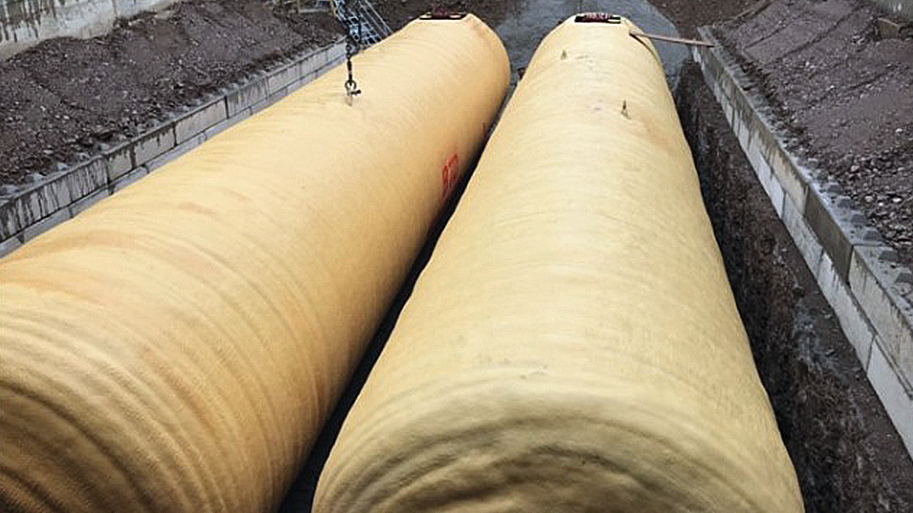The Fraunhofer ISE project "Non-residential buildings as flexible actors in the energy system" investigated how buildings from industry and the tertiary sector can be integrated into the energy economy. Case studies determined the so-called flexibilization potential and showed that buildings can be a not insignificant component of the renewable energy industry in the future.
The project is being funded as part of the German government's 6th Energy Research Program. The aim was to demonstrate innovative heating and cooling technologies as well as solutions for reducingCO2 emissions and integrating renewable energies. In addition to the efficient use and linking of electricity, heating and cooling, the project tested how industry and the tertiary sector (trade, commerce, services) can participate in the energy economy with their "non-residential building stock".
"Until now, the properties of medium-sized industrial companies or the tertiary sector have only been considered in terms of primary energy, not as actors in the energy system. The potential for providing flexibility that lies dormant in them has not been sufficiently researched to date, a gap that our project has closed," explains Dr. Jessica Thomsen, Team Leader Decentralized Energy Supply and Markets at the Fraunhofer Institute for Solar Energy Systems (ISE).
The project has shown how a transformation path to a greenhouse gas-neutral future can be found by taking a holistic view of the energy system, even in medium-sized organizations. The degree of self-sufficiency can be increased primarily through photovoltaics in combination with heat pumps or thermal or electrical storage systems. This reduces energy costs andCO2 emissions. However, flexible, grid-supporting operation is almost impossible to achieve with the current legal framework and installed metering technology. In order to leverage relevant flexibility potential, the tariff structure for electricity procurement must be reformed and the technological prerequisites must be created to make the provision of flexibility economically attractive. For example, grid charges could be made more dynamic and adapted to grid or system requirements.
Solutions for electricity, heating and cooling tested
Initially, an energy system analysis was carried out at the companies Hermann Peter KG Baustoffwerke, Rheinau, and Taifun-Tofu GmbH, Freiburg, as well as at Fraunhofer ISE, which is also based in Freiburg. The project consortium developed and installed detailed measurement concepts for recording energy data. Based on this data, the scientists at Fraunhofer ISE mapped the energy systems of the case studies in the District energy system model and determined the technical potential for flexibilizing the use of electricity, heat and cooling.
For example, a cooling network and a cold water storage tank with a volume of 200 cubic meters were installed at Fraunhofer ISE. System efficiency was increased by replacing several small, decentralized cooling systems. The cold storage tank also makes it possible to cover a larger proportion of the load with free cooling and to operate the cooling systems more flexibly, e.g. in line with changing electricity prices. The important role of heat pumps was also underlined by the project. "The on-site analyses have shown us what possibilities there are for us to make our process heat requirementsCO2-neutral," explains Alfons Graf, Head of Technical Expansion at project partner Taifun Tofu GmbH. These findings will be taken into account in future investment decisions.
Flexibility potential cannot be exploited without incentives
The flexibility options identified by the project team for the non-residential building sector were integrated into a regional and Germany-wide energy system and energy market model in order to assess their interaction with the energy system and the associated effects. In order to estimate the negative and positive flexibility potential for Germany, the team surveyed the non-residential building stock and calculated the flexibility potential for various technologies.
In order to classify the calculated flexibility potentials, they were compared with the forecast residual load (demand for electricity that cannot be covered by renewable energies) for Germany in 2045. This showed that non-residential buildings alone have a relevant flexibility potential that corresponds to up to 3.2 percent of the residual energy in 2045.
Another focus of the project was the legal analysis of the obstacles that currently prevent the use of flexibility potential. This analysis was carried out by the Institute for Climate Protection, Energy and Mobility (IKEM) as a further project partner. It revealed that without economic incentives for the provision of flexibility, companies are currently unable to compensate for the financial and non-financial costs of tapping into the potential. The project team therefore developed a roadmap to identify the necessary framework conditions for flexibilization. A central obstacle is the grid fees: a reform that promotes electricity demand in line with the electricity supply (e.g. incentive for peak loads during solar power peaks) would make flexibilization more economically interesting.


